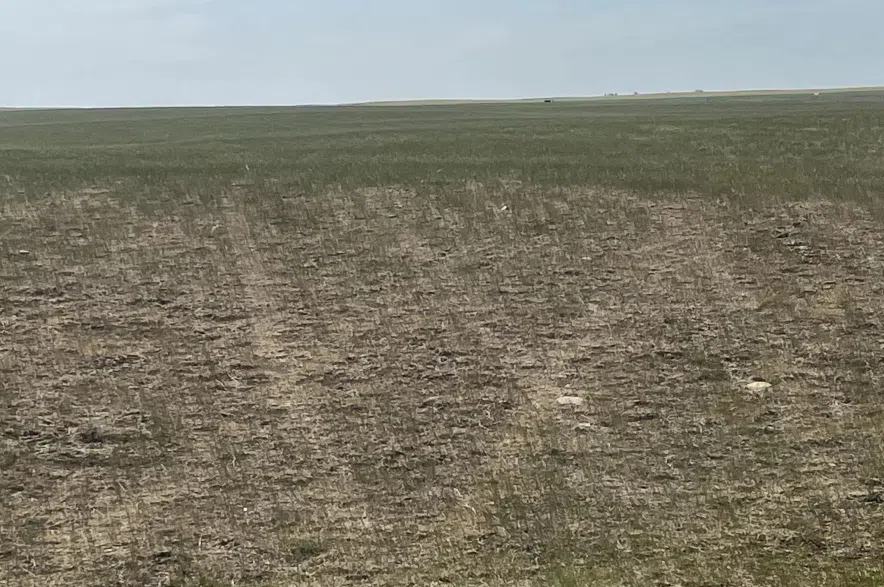Despite getting rainfall in some areas, producers in southwest Saskatchewan continue to face severe drought conditions.
Kelly Bakanec is a grain farmer and the reeve of the RM of Fox Valley. He said the area had received 1.42 inches of rain between snowmelt and July.
Read more:
- Crop conditions improving in Saskatchewan, but more rain needed
- LISTEN: Saskatchewan couple frustrated after ATV driver crushes crops
Over the last two weeks, the area has got two inches of rain, he said.
“It’s been a really bad year for us, you really have to come here and see it,” he told 980 CJME on Friday.
“If this rain had come a month sooner, we’d have a nice crop. I’ve never seen such a dry period for so long, and then bang — now we’ve got two inches of moisture in the last two weeks, which is crazy.”
Bakanec said the rainfall arrived too late to save this year’s crop, but it introduced a different problem: weeds have now taken control of his field due to receiving very little competition from the poor, thin crop.
Bakanec said he’s started a costly process to get rid of the weeds.
“Not only do we have a disaster with the poor crop, now we’ve got a real good crop of weeds coming. So it’s been a crazy year, I’ve never seen something like this before,” he said.
“Now, with the extra expense of spraying or mowing … this morning I was on the phone with an agrologist saying ‘What am I going to do here?’”
Although it won’t help this year’s crop, Bakanec said he’s still hoping for moisture to make things better next year.
The drought has had an impact on all sorts of producers, including cattle ranchers. Some ranchers have said they’ve have to downsize their operations from not being able to produce enough feed for their animals.
To help, the Government of Saskatchewan announced a one-time increase for the 2025 AgriStability business risk management program and the compensation rate was bumped up from 80 per cent to 90 per cent for this year.
The Saskatchewan Crop Insurance Corporation also doubled the maximum payment cap from $3 million to $6 million.
Read more:











